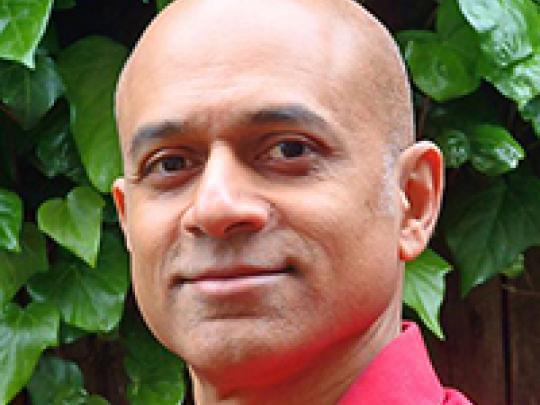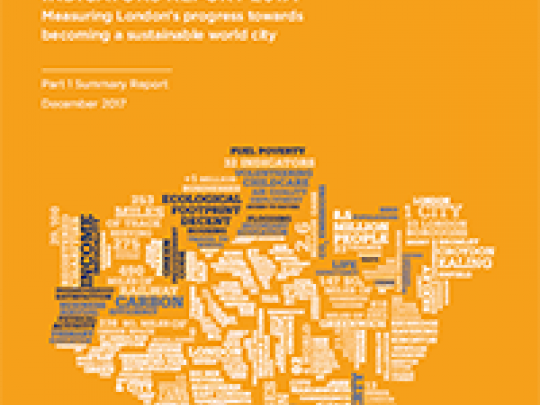
By Dr Ashok Sinha, Chair of the London Sustainable Development Commission
How can we ensure London lives within its environmental means, and in doing so increases quality of life for every Londoner, present and future? How can we increase equity and widen prosperity whilst averting the existential threat humanity has created for ourselves – and much else that co-habits this planet – through our unsustainable relationship with the natural environment?
You’d expect these to be doorstep issues at election time; the kind of questions that keep politicians awake at night. If only. As the dust settles on the recent London Borough Elections we can safely say that these, arguably the greatest challenges of our times, were not at the centre of the political cut and thrust.
Why? If you can’t afford to live in the community of your upbringing or your journey to work is a daily nightmare then, it’s unsurprising if such quotidian difficulties shape your votes. But it’s unfair to simply say we get the politicians – and politics – we deserve: a well-motivated political class that takes it upon itself to be well-informed, and seeks to bring the electorate with it, can and must provide the critical ingredient – leadership.
That means enabling politicians, like those recently elected to run our boroughs, to get to grips with some basic questions about London’s sustainability. What are we doing well? Where are we falling behind? How wide are the gaps between where we are now and where we need to be? Effective action to adopt the best thinking and remediate deficiencies is not possible without access to these metrics.
The London Sustainable Development Commission’s latest Quality of Life Indicators Report is an attempt to provide politicians - and indeed decision-makers across London’s public, private and third sectors - with the metrics they need to guide action. It also provides London’s entrepreneurs and citizenry with the necessary knowledge to set expectations of our leaders - and to also themselves innovate or intervene as consumers. We do not claim the indicators to be perfect or perfectly tuned to what every audience needs. But we’re confident they represent the best available snapshot of London’s vital signs, and quantify how things have changed since our last edition in 2012 and the first one in 2004.
We strongly encourage everyone to reflect on and draw their own conclusions from the report. The LSDC itself will in due course publish our own views on what policies London’s leaders should adopt (albeit that we have already made public our perspectives on the Mayor’s draft London Plan and Economic Development Strategy). That said, amidst the positive storylines in many areas such as sustainable transport and economic growth, the LSDC can say right now that major areas of concern rise ineluctably from the data. An example is the rise of social inequalities, highlighted by the widening of gaps in educational outcomes and access to affordable housing. Another example is economic unfairness: the report further evidences the continuing and growing gulf between the financial haves and the have nots.
And then we have the defining problem, climate change: London’s direct carbon emissions are decreasing – a good news story – but the current rate of reduction is almost certainly inconsistent with meeting the goal of limiting global warming to 2 degrees Centigrade, let alone the 1.5 degrees Centigrade aspiration, of the Paris Agreement; and the emissions associated with the goods and service we import are rising. We are not on the right pathway to meeting the target Mayor has laudably set to decarbonise our city entirely by 2050 (recognising that London is also very dependent on Government action).
By no stretch of the imagination do politicians bear sole responsibility to make London’s development sustainable; business and civil society must, and in many cases, are, stepping up. But, in short, these indicators show just how much there is for London’s 1,979 elected representatives to address.Cities, including megacities like London, are crucibles of innovation that will be in the vanguard of improving humanity’s lot within the boundaries of our environmental abode. They need unprecedented leadership to succeed in this mission. These Quality of Life Indicators are required reading for all those shaping the future of London, and I particularly encourage everyone who has just taken the reins of power in our boroughs to digest them and reflect on their profound implications. I look forward to hearing much more from these leaders on how they will rise to the challenge between now and the next time they seek our votes in 2022.
About the author

The Chair of the London Sustainable Development Commission Dr Ashok Sinha is currently Chief Executive of the London Cycling Campaign. Previously he was Director of The Climate Coalition, a co-founder of Make Poverty History and Director of the Jubilee Debt Campaign. He has a PhD in renewable energy and conducted research into climate change and renewable in academia and Forum for the Future. He has been named one of London’s 1000 Most Influential People by the Evening Standard for the last five years and was named one of the UK’s top 100 Environmentalists by the Independent on Sunday in 2008.
About the Quality of Life Indicators reports

The LSDC’s Quality of Life Indicators reports are a snapshot of London’s quality of life that identify the key sustainability issues that the city faces. The 2017 iteration is the fifth in the series. It draws on existing datasets to examine 32 key indicators, which provide evidence to help guide decision-makers in taking the actions needed to improve the quality of life of all Londoners: present and future, and to help the city play its full role in meeting global sustainability goals. As part of its ongoing work in this area, the LSDC will be looking at how London can compare its performance against the relevant Sustainable Development Goals, including reviewing the Quality of Life indicator set so that future reports allow that. The LSDC will also be looking at how the reports can able more in-depth detail of what is emerging at London Borough level and in doing so enable further comparisons of the progress that is being made towards sustainable development across the capital. Please get in touch if you have any feedback or with your suggestions for future reports.